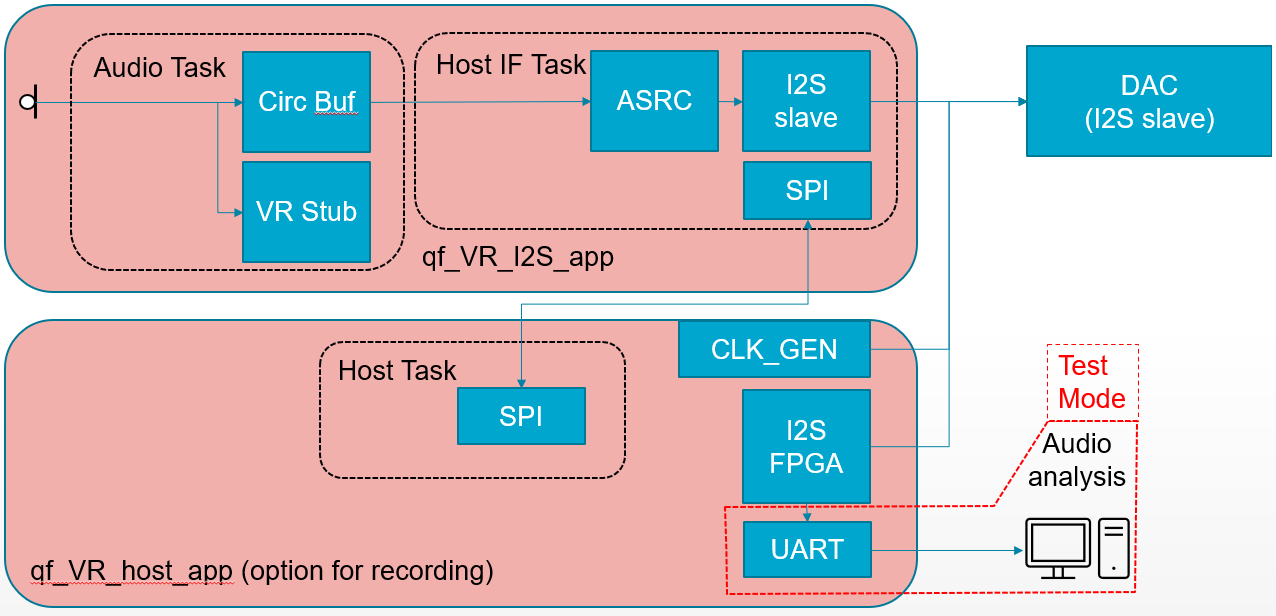QORC Voice Recognition apps
Overview
This is a series of 5 example apps located in the qf_vr_apps directory. Unfortunately, the major VR engines are covered by proprietary licenses, so these app have stubs where proprietary code needs to be installed. Each of the apps demonstrates a different building block. For many applications the apps may be usable as is, and for a few the developer will need to combine elements from different apps.
Key concepts
Datablock manager
The qorc-sdk uses a datablock manager (qorc-sdk/Libraries/DatablockManager) to handle high-speed real-time data. During start-up the system allocates a pool of datablocks. During audio processing the audio ISR obtains a block from the queue of free blocks, fills it with data, and adds it to the processing queue. The processing queue acts as an elastic buffer that can fill up when the processer is heavily loaded, and drain when the processor is lightly loaded, which allows variable rate handling of the audio data even thought the input comes at a constant rate.
Datablocks can be assigned to more than one queue, and will only be returned to the free queue when they are not allocated to any queue. An example of assigning a datablock to more than one queue is when data is streamed to a processing element, such as VR, and a storgae element such as SD card.
Datablock processor
A typical audio processing system has a number of processing elements arranged in a pipeline where the output of one element feeds the input of the next element. The qorc-sdk has a mechanism called the datablock processor (qorc-sdk/Tasks/DatablockProcessor) designed to manage pipelines of fucntions that use datablocks. Each pipeline is implemented as a task. Each function is called a processing element, and the entire pipeline is specified by an array that defines a list of processing elements and which datablock queues they read data from and which datablock queues they write data to. CRITICAL: all processing elements must be non-blocking.
Host Interface Task
Frequently the VR app needs to communicate with a BLE or WIFI device. This interaction is managed by the Host Interface Task and usually involves control packets that are communicated over a SPI link, and data that is either compressed, packetized and transmitted over the SPI link, or streamed isochronously over I2S.
VR Example Apps
qf_1micVR_app: standalone app using a single microphone
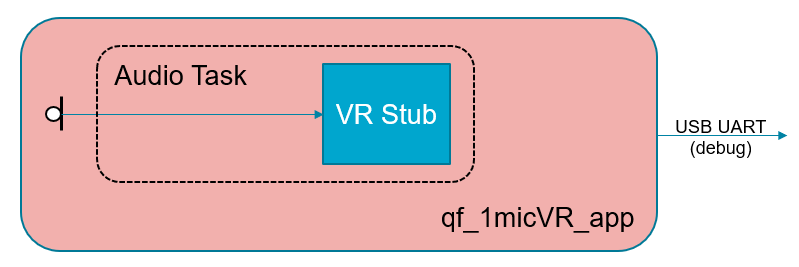
Purpose
Demonstrate the basic operation of the audio system and datablock processor
Description
This is the most basic VR app. The audio pipeline is very simple:
datablk_pe_descriptor_t datablk_pe_descr_audio[] =
{
/* processing element descriptor for pre-processing */
/* in_id out_id fActive fSupplyOut fReleaseIn poutq_processor pe_funcs pe_bypass_func p_pe_sem */
/* VR */ { AUDIO_ISR_PID, AUDIO_QL_VR_PID, true, false, true, &audio_ql_vr_outq_processor, &ql_vr_funcs, NULL, &ql_vr_sem },
};
The pipeline has one function for VR. It reads datablocks that have PID=AUDIO_ISR_PID (the out_id is meaningless for the VR function). It is active, meaning it will be called whenever a relevant datablock is present, it does not need an empty datablock to use for output data, and when processing is finished the datablock can be released (returned to the free queue if it isn’t on another queue). The output queue processor is not relevant since VR does not produce output data. The routines to be called are defined by the ql_vr_funcs structure (more on this later). There is not bypass function, and the semaphore used to stop processing while changing parameters is ql_vr_sem.
There are two functions used by the VR processing :
/* ql vr processing element functions */
datablk_pe_funcs_t ql_vr_funcs = {datablk_pe_config_ql_vr, datablk_pe_process_ql_vr, NULL, NULL, NULL } ;
one to configure and one to process datablocks.
Required hardware
QuickFeather
qf_2micVR_app: standalone app using two microphones with stub for beamforming

Purpose
Demonstrate how to setup and handle stereo input.
Description
Coming soon
Required hardware
Modified QuickFeather (modifed to use external microphone)
Calaveras board (support 2 microphones)
Cradle (holds QuickFeather and Calaveras boards)
QuickFeather AVS Cradle
Dual QuickFeather Cradle
qf_VR_raw_app: companion app implementing VR, host communications over SPI, packetizing raw audio with and streaming the audio packets over SPI.r
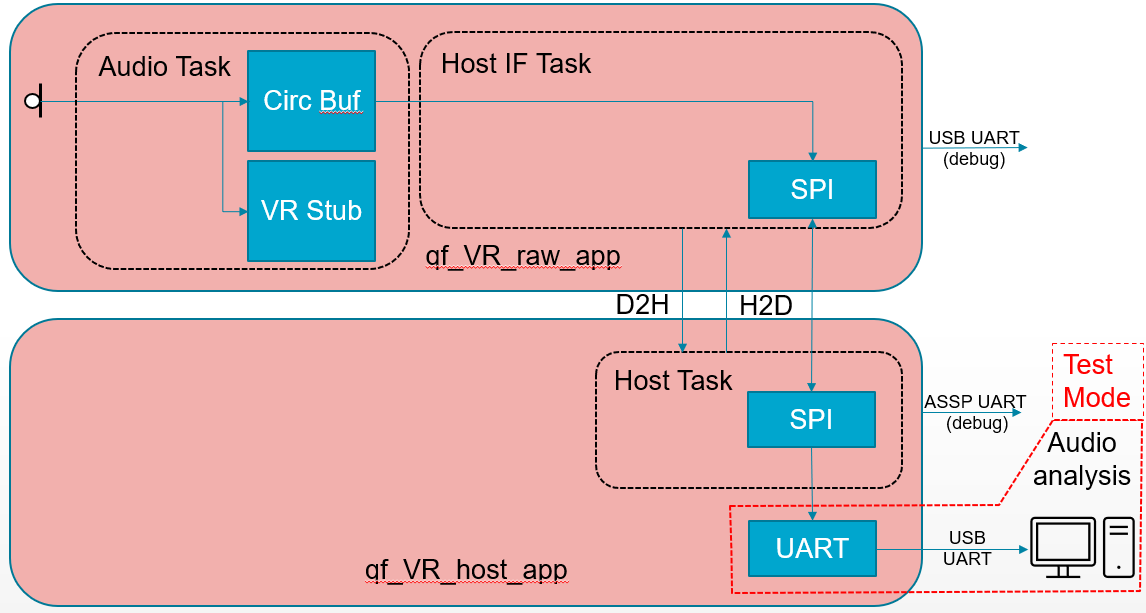
Purpose
Demonstrate host/companion command protocol and raw audio streaming over SPI.
Description
Coming soon
Required hardware
2xQuickFeather (one as companion, one as host)
I2S DAC board (audio output)
Cradle (holds QuickFeather companion and QuickFeather host)
PC to receive and analyze audio packets
qf_VR_opus_app: [coming soon] companion app implementing VR, host communications over SPI, compressing and packetizing audio with opus and streaming the audio packets over SPI.
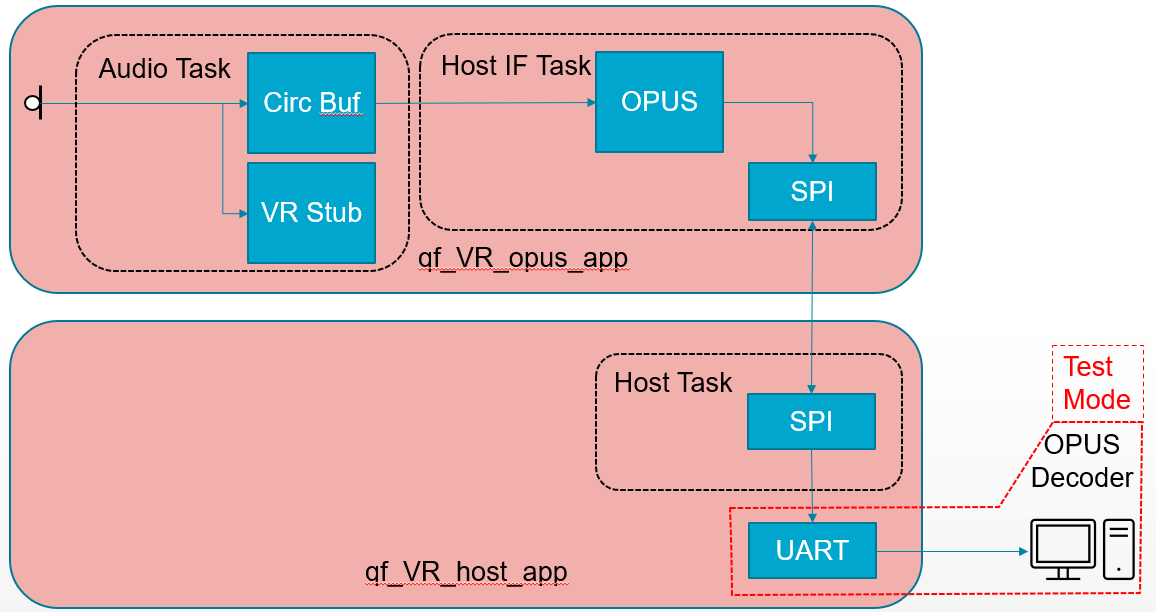
Purpose
Demonstrate host/companion command protocol, opus compression and audio streaming over SPI.
Description
Coming soon
Required hardware
2xQuickFeather (one as companion, one as host)
I2S DAC board (audio output)
Cradle (holds QuickFeather companion and QuickFeather host)
Dual QuickFeather Cradle
PC to receive and decode opus packets
Optional: Local playback
The hardware is configured to support real-time playback through DAC. No
plans for software support of this option. 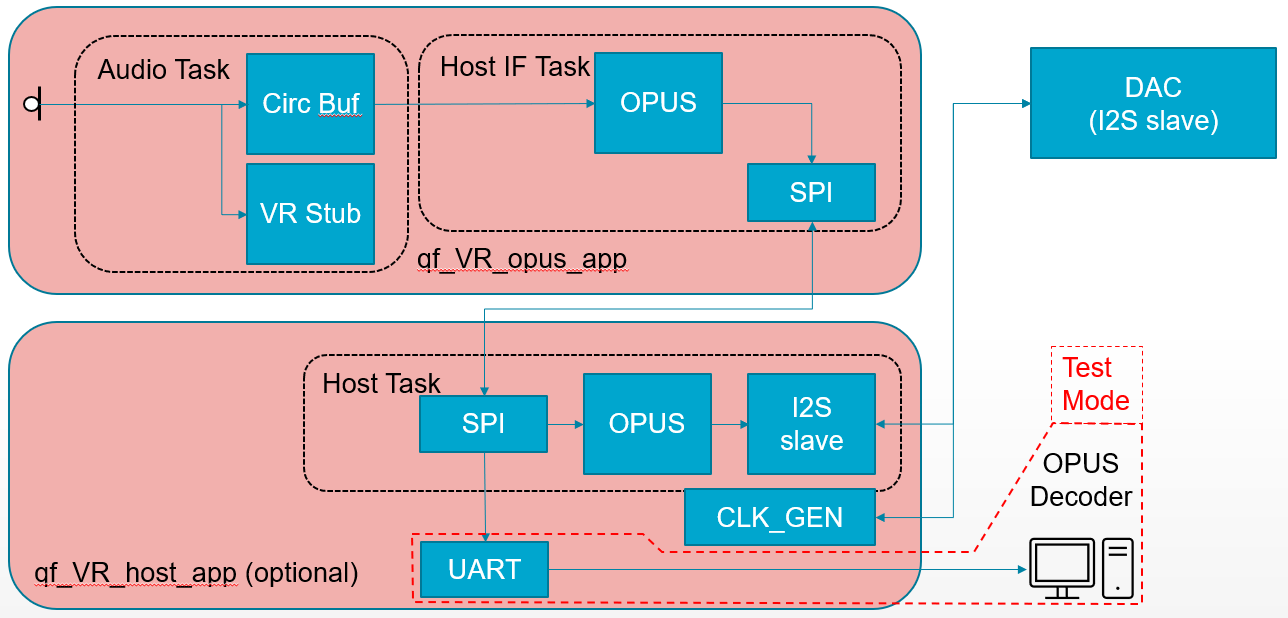
qf_VR_I2S_app: [coming soon] companion app implementing VR, host communications over SPI and streaming audio over I2S
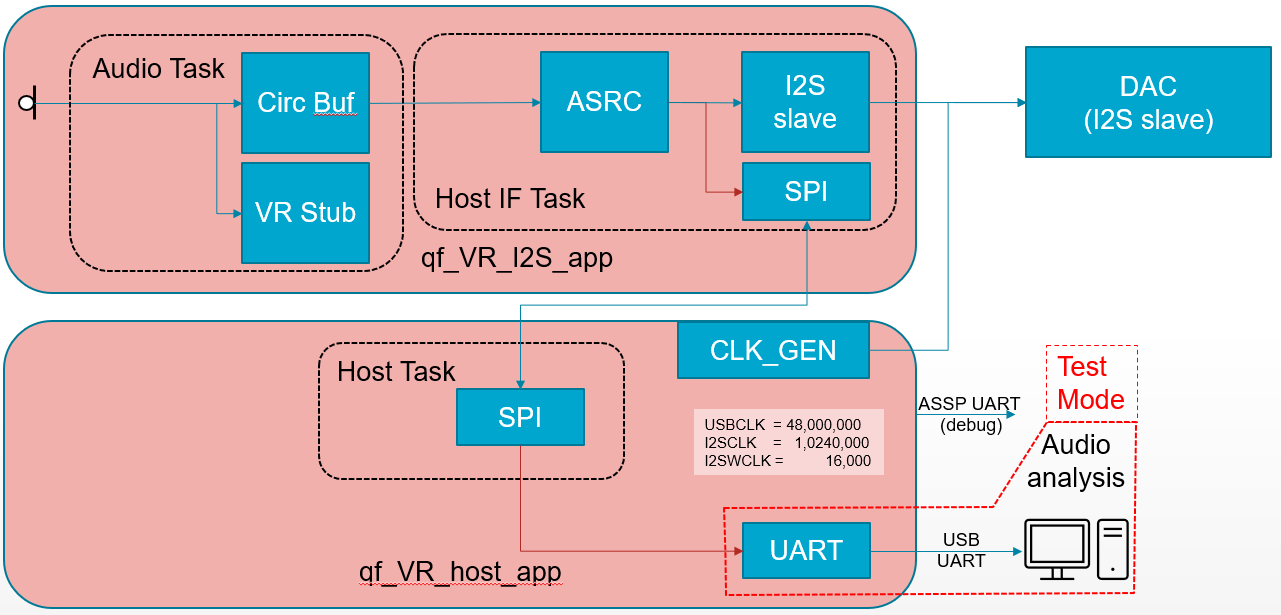
Purpose
Demonstrate host/companion command protocol, and I2S isochronous output that handles host/companion clock synchronization.
Description
Coming soon
Required hardware
2xQuickFeather (one as companion, one as host)
I2S DAC board (audio output)
Cradle (holds QuickFeather companion and QuickFeather host)
Dual QuickFeather Cradle
Optional: PC analysis
The hardware is configured to support recording of I2S data on a PC. No
plans for software support of this option. 